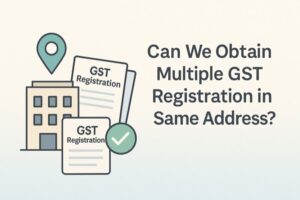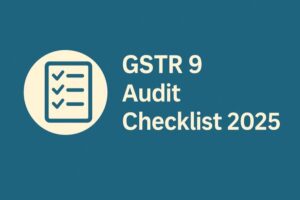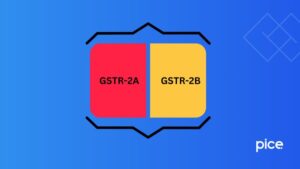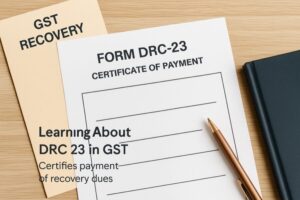Karnataka VAT Audit with Form VAT 240: A Detailed Overview
- 16 Aug 24
- 11 mins
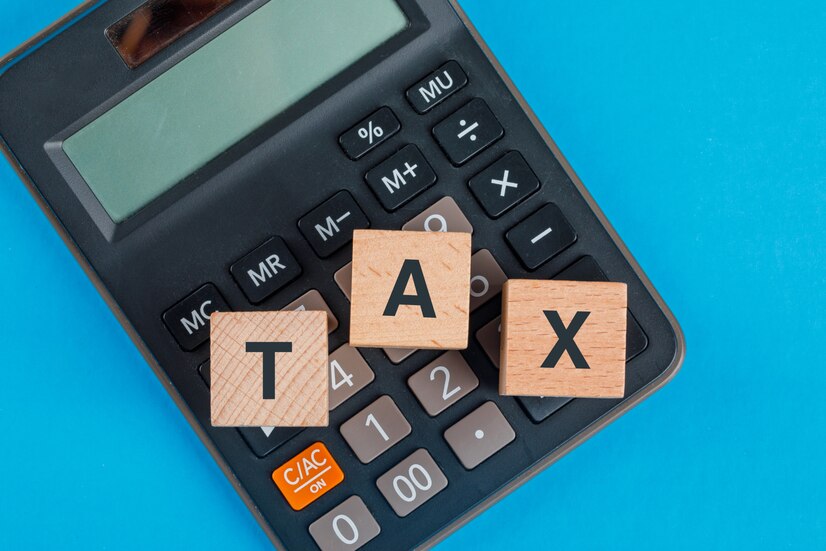
Karnataka VAT Audit with Form VAT 240: A Detailed Overview
Key Takeaway
- Businesses in Karnataka whose annual taxable turnover exceeded the threshold set by the Commercial Taxes Department were required to undergo a VAT audit for the fiscal year 2017-18.
- The KVAT audit process necessitates detailed financial record-keeping and reconciliation of VAT returns with audited financial statements to ensure compliance.
- Form VAT 240 is critical for the KVAT audit, capturing detailed information about a business's VAT transactions over the fiscal year.
- Timely submission of Form VAT 240 by the specified deadline is essential to avoid penalties and maintain good standing with tax authorities.
- Professional assistance from auditors or tax consultants is highly recommended to navigate the complexities of KVAT regulations and ensure accurate audit reporting.
Who Needs to Undergo KVAT Audit for the Fiscal Year 2017-18?
For the fiscal year 2017-18, the Karnataka VAT (KVAT) audit was applicable to specific categories of businesses operating within the state of Karnataka, as dictated by the Karnataka Value Added Tax Act. Here’s a general guideline on who was required to undergo the KVAT audit for that period:
- Turnover Threshold: Businesses whose annual taxable turnover exceeded a certain limit set by the Karnataka Commercial Taxes Department were mandated to undergo a VAT audit. Typically, this threshold was around INR 1 crore, but it’s important to check the specific limit for the 2017-18 fiscal year as defined in the state’s VAT rules.
- Specific Business Categories: Certain types of businesses that dealt extensively with goods subject to VAT might have been required to undergo an audit regardless of whether they exceeded the turnover threshold. This includes businesses involved in manufacturing, trading, and those with interstate sales.
- Past Compliance and Audit Requirements: Businesses that were previously audited under KVAT, or had discrepancies in past filings, might also have been flagged for mandatory auditing for the fiscal year 2017-18.
- Government Directive: Occasionally, specific directives or notifications issued by the Karnataka Commercial Taxes Department might require certain businesses to undergo a VAT audit due to changes in policy, economic measures, or compliance strategies.
Businesses meeting any of these criteria were typically required to prepare and submit a detailed audit report in Form VAT 240, as per the guidelines set by the Karnataka Commercial Taxes Department for the fiscal year 2017-18.
Timeline and Form Requirements for KVAT Audit in FY 2017-18

For the fiscal year 2017-18, the Karnataka VAT (KVAT) audit had specific timelines and form requirements that businesses needed to adhere to in order to comply with the regulations. Here's an overview of the timeline and the necessary forms:
Timeline for KVAT Audit in FY 2017-18
The deadline for completing and submitting the KVAT audit report in Form VAT 240 was typically set at a specific date after the end of the fiscal year. For the fiscal year 2017-18, businesses were generally required to submit their VAT audit reports by December 31, 2018. This allowed businesses adequate time after the closing of the fiscal year on March 31, 2018, to prepare their accounts and get them audited.
Form Requirements
The key form associated with the KVAT audit for FY 2017-18 was Form VAT 240. This form was designed to capture detailed information about the business's VAT transactions over the fiscal year and ensure compliance with the KVAT rules. Form VAT 240 required detailed disclosures including but not limited to:
- Total sales and purchases during the year
- Output VAT collected
- Input VAT credit claimed
- Details of tax paid
- Information on interstate sales and purchases
- Exempted sales and stock transfers
Additional Documentation
Besides the main audit form (VAT 240), businesses might also have been required to submit additional documentation such as:
- Certified financial statements
- Tax invoices and supporting documents for transactions
- Records of any exempt, zero-rated, or non-VAT transactions
- Reconciliation statements between the VAT returns filed during the year and the audited financial statements
Businesses were advised to retain a copy of the audit report and all related documentation for a period defined by the KVAT Act, typically around five years, in case of any future queries or assessments by the tax authorities.
Adhering to these timeline and form requirements was crucial for businesses to ensure compliance and avoid any potential penalties or legal issues related to KVAT non-compliance.
Key Considerations for the KVAT Audit of 2017-18
When preparing for the KVAT audit for the fiscal year 2017-18, there were several key considerations that businesses needed to keep in mind to ensure a smooth and compliant audit process. These considerations are vital for correctly interpreting the KVAT rules and for preparing the necessary documentation:
1. Regulatory Updates
Businesses were required to stay updated on any changes in the KVAT regulations that might have occurred either during or after the fiscal year. Changes could include updates in tax rates, modifications in filing procedures, or adjustments to the criteria for taxable and exempt items. Awareness and incorporation of these changes into the audit process were crucial for maintaining compliance.
2. Accurate Record-Keeping

The importance of maintaining meticulous records cannot be overstated. Businesses needed to ensure that all transactions involving goods and services were properly documented and easily retrievable. This includes sales invoices, purchase receipts, tax payment receipts, and records of exports and imports. Good record-keeping facilitated easier reconciliation with financial statements and VAT returns.
3. Reconciliation of VAT Returns
A critical part of the KVAT audit was the reconciliation of VAT returns filed during the year with the audited financial statements. Discrepancies between these documents could lead to queries from the Commercial Taxes Department. It was essential for businesses to reconcile these figures carefully and make any necessary adjustments or corrections in the audit report.
4. Input Tax Credit (ITC) Verification
Verifying the accuracy of the input tax credit claimed was a key audit focus. Businesses needed to ensure that all ITC claims were supported by valid and verifiable documentation. The eligibility of the input credits, particularly in cases of inter-state procurements and capital goods, had to be carefully assessed as per the KVAT rules.
5. Dealing with Special Circumstances
Some businesses might have faced special circumstances such as undergoing a restructuring, entering new markets, or dealing with significant changes in their supply chain. These circumstances could affect the VAT implications and needed careful consideration during the audit.
6. Professional Assistance
Due to the complexities associated with VAT regulations and the potential for significant financial implications, many businesses opted to engage professional auditors or tax consultants. These professionals could provide expert advice on KVAT compliance, assist in preparing accurate audit reports, and help in handling any disputes or queries from tax authorities.
Understanding the Layout of Form 240
Form 240 is the designated form for the VAT audit report under the Karnataka VAT Act. It is structured to capture detailed information regarding a business's VAT transactions throughout the fiscal year. Understanding the layout and the specific sections of Form 240 is crucial for accurate and efficient completion. Here’s a breakdown of the typical structure and content of Form 240:
1. Basic Information
This section includes the basic details of the taxpayer:
- Name and address of the business
- Taxpayer’s identification number (TIN)
- Period of audit (fiscal year)
- Details of the auditor, including name and registration number
2. Financial Statements Summary
- Summary of the audited financial statements, including profit and loss account, and balance sheet
- Total turnover, taxable turnover, and details of exempt sales
3. Details of Purchases and Sales
- Total purchases and sales during the year, split into taxable and exempt categories
- Breakdown of interstate and local transactions
- Details on reverse charge mechanisms, if applicable
4. Tax Calculations
- Computation of output VAT payable on sales
- Details of input VAT credit claimed on purchases
- Reconciliation of VAT paid as per returns with the audited accounts
5. Adjustments and Amendments
- Any adjustments made during the audit period
- Amendments to returns filed during the year
- Explanation of discrepancies, if any
6. Additional Information
- Information on special transactions like imports and exports
- Details of capital goods acquired and their VAT implications
- Disclosure of any contingent liabilities or pending disputes related to VAT
7. Declaration and Verification
- A declaration by the taxpayer confirming the accuracy of the information provided in the form
- Verification and certification by the auditor, attesting to the compliance of the audit with the KVAT rules and the accuracy of the reported figures
8. Attachments
- Supporting documents and schedules that provide detailed evidence and support for the figures entered in the form
- Copies of revised tax returns, if any
Form 240 must be filled out with great care, as it provides a comprehensive view of the business’s VAT compliance status to the tax authorities. Inaccuracies or omissions can lead to legal consequences, including fines or further audits. Thus, it's advisable to work with a qualified tax professional or auditor when preparing Form 240 to ensure all information is complete and accurate.
Steps to Successfully Submit Form VAT 240
Submitting Form VAT 240 correctly is crucial for businesses under the Karnataka VAT system to ensure compliance and avoid penalties. Here are the steps to follow for successfully submitting this form:

1. Prepare Financial Records
Begin by ensuring that all financial records are accurate and up-to-date. This includes detailed ledgers, sales and purchase invoices, tax payment receipts, and any other relevant financial documentation.
2. Review VAT Transactions
Carefully review all VAT transactions for the fiscal year. This involves checking entries related to sales, purchases, input tax credits, and any applicable adjustments or exemptions.
3. Reconcile VAT Returns
Reconcile VAT returns filed during the fiscal year with the annual financial statements. Any discrepancies found should be thoroughly investigated and corrected in the audit report.
4. Complete Form VAT 240
Fill out Form VAT 240 with accurate information from your financial records and reconciliations. Ensure each section is completed in detail, providing clear explanations for any adjustments or discrepancies.
5. Collect Necessary Attachments
Gather all necessary attachments and supporting documents that need to be submitted along with Form VAT 240. This could include detailed financial statements, copies of VAT returns filed during the year, and documents supporting input tax credit claims.
6. Review and Verify
Review the completed Form VAT 240 and all attachments to ensure accuracy and completeness. It's advisable to have a professional auditor or a tax advisor review the documents to catch any potential errors or omissions.
7. Submit Before the Deadline
Ensure the form and all supporting documents are submitted to the appropriate tax office before the deadline. Late submissions can result in penalties and interest charges.
8. Keep Copies for Records
After submitting, keep copies of Form VAT 240 and all supporting documents for your records. These may be needed for future reference, audits, or in case of disputes with tax authorities.
9. Monitor for Feedback
After submission, monitor for any feedback or queries from the tax authorities. Be prepared to provide additional information or clarification if requested.
 By
By 





